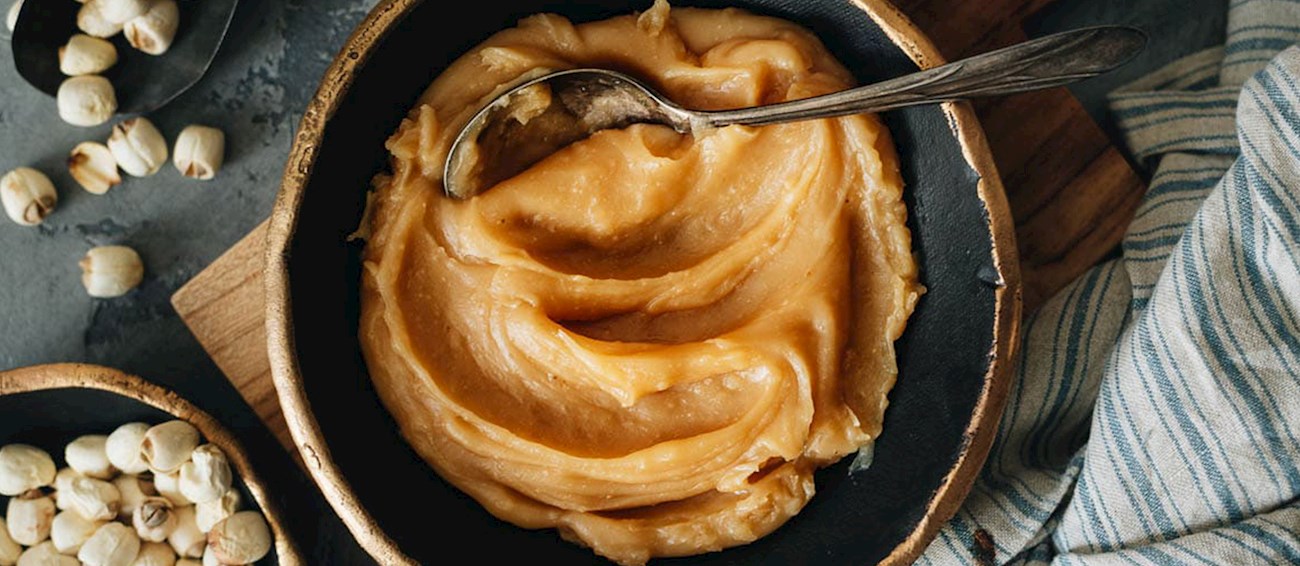Best Chinese Paste Types
Traditionally, Sichuan's doubanjiang is a paste made from fermented broad beans, salt, chilis, and sometimes wheat flour. The ingredients are mixed and then placed in large clay pots to mature for at least a year while being daily hand-stirred.
Depending on the maturation time, spanning from one to eight years, the paste will differ in color, texture, and flavor, ranging from bright red to a dark reddish-brown color. Mature doubanjiang will also have a much spicier and saltier flavor. The sauce which is often dubbed the soul of Sichuan cuisine is an important element in various dishes, most notably mapo doufu and twice-cooked pork.
Asian cuisine has various fermented bean pastes made from soy beans, all of which are commonly titled as doubanjiang but only the bean paste prepared in Sichuan province is the authentic version.
MAIN INGREDIENTS
Lotus seed paste is a sweet, smooth filling commonly used in Chinese pastries and desserts. It's made from dried lotus seeds, which are the seeds of the lotus plant. The dried lotus seeds are soaked in water to rehydrate them. After soaking, they are cooked until soft.
The cooked seeds are peeled to remove the bitter-tasting green germ (or heart) inside. This step is crucial as the germ can impart an undesirable bitter flavor to the paste. The peeled seeds are then mashed or ground into a fine, smooth paste. This can be done manually or with the help of machines in commercial production.
Zhī ma jiàng is the Chinese term for sesame paste, which is an ingredient that plays a central role in many Chinese dishes. This sesame paste is particularly popular in both Northern and Sichuan cuisines. It is typically made from toasted, unhulled sesame seeds, giving it a darker color and a more robust, nuttier flavor compared to tahini (a Middle Eastern sesame paste made from hulled sesame seeds).
In Chinese cuisine, zhī ma jiàng is used in various dishes. It is mixed with noodles, used as a dip for hot pot dishes, or incorporated into sauces and dressings to add richness and depth.
TasteAtlas food rankings are based on the ratings of the TasteAtlas audience, with a series of mechanisms that recognize real users and that ignore bot, nationalist or local patriotic ratings, and give additional value to the ratings of users that the system recognizes as knowledgeable. TasteAtlas Rankings should not be seen as the final global conclusion about food. Their purpose is to promote excellent local foods, instill pride in traditional dishes, and arouse curiosity about dishes you haven’t tried.


